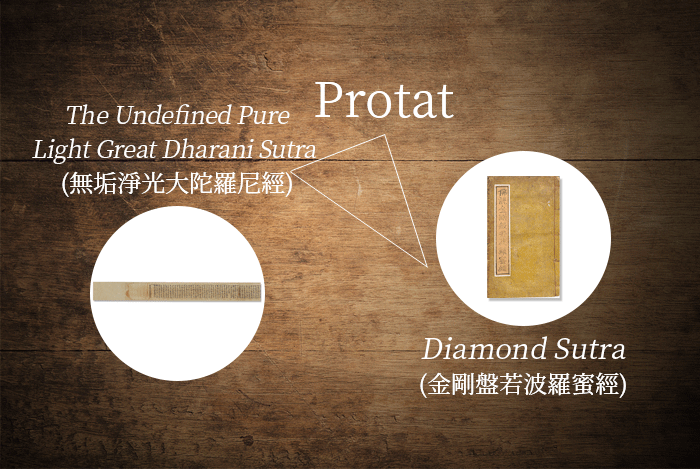
There are mixed opinions among researchers on when woodblock printing began. Chinese scholar Chang Xiumin (長秀民) introduces various theories in his book, The Invention of Printing and Its Effects (印刷術的發明及其影響): according to these theories, woodblock printing began in Han China (165); during the reign of Emperor Chengdì (成帝) of Eastern Jin (326-334); the Six Dynasties period (222-584); the Sui dynasty (581-617); the Tang dynasty (618-908); the Five Dynasties (907-959); or the Northern Song (960-1126). Amidst such varying presumptions, early woodblock print of the East can provide a clue for more accurate dating. Diamond Sutra (金剛盤若波羅蜜經), discovered in Dunhuang (敦煌), China, documents that it was printed in 868 and its engraved form suggests a high level of technical sophistication at the time. Therefore, it can be assumed that woodblock printing must have existed earlier than that. The Undefined Pure Light Great Dharani Sutra (無垢淨光大陀羅尼經) of Korea, the world’s oldest extant woodblock print, is presumed to have been printed between 706 and 751. This scroll book provides a clue for dating the emergence of woodblock print to the mid-7th century or around the 8th century. Woodblock printing of the East played a great role in promoting the book culture of the region and even after the advent of the moveable metal type, it endured and continued being used to produce large quantities of individual books.
In the West, meanwhile, there was the woodblock with the Bible crafted on both sides called the “Protat,” which dates back to the period between 1370 and 1380 and it was also used to make playing cards or calendars from the late 14th century to 15th century. In the early 15th century, full woodblock print books such as Biblia pauperum appeared and about a hundred copies remain extant today.


